Step-by-step instructionS
Cup profile: less acidic clean taste with flavors and medium body, usually brewed for 1 cup



AEROPRESS
HOW TO (4 min):
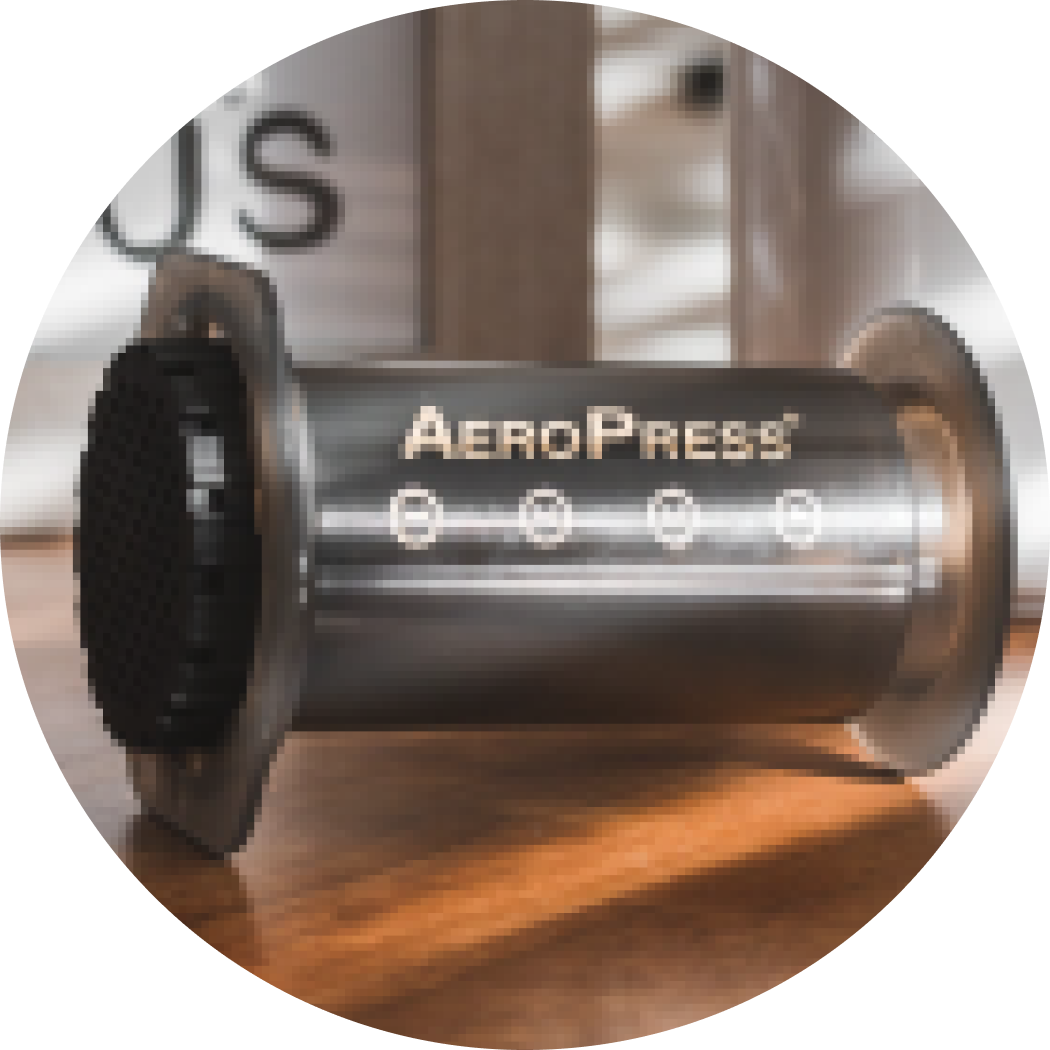
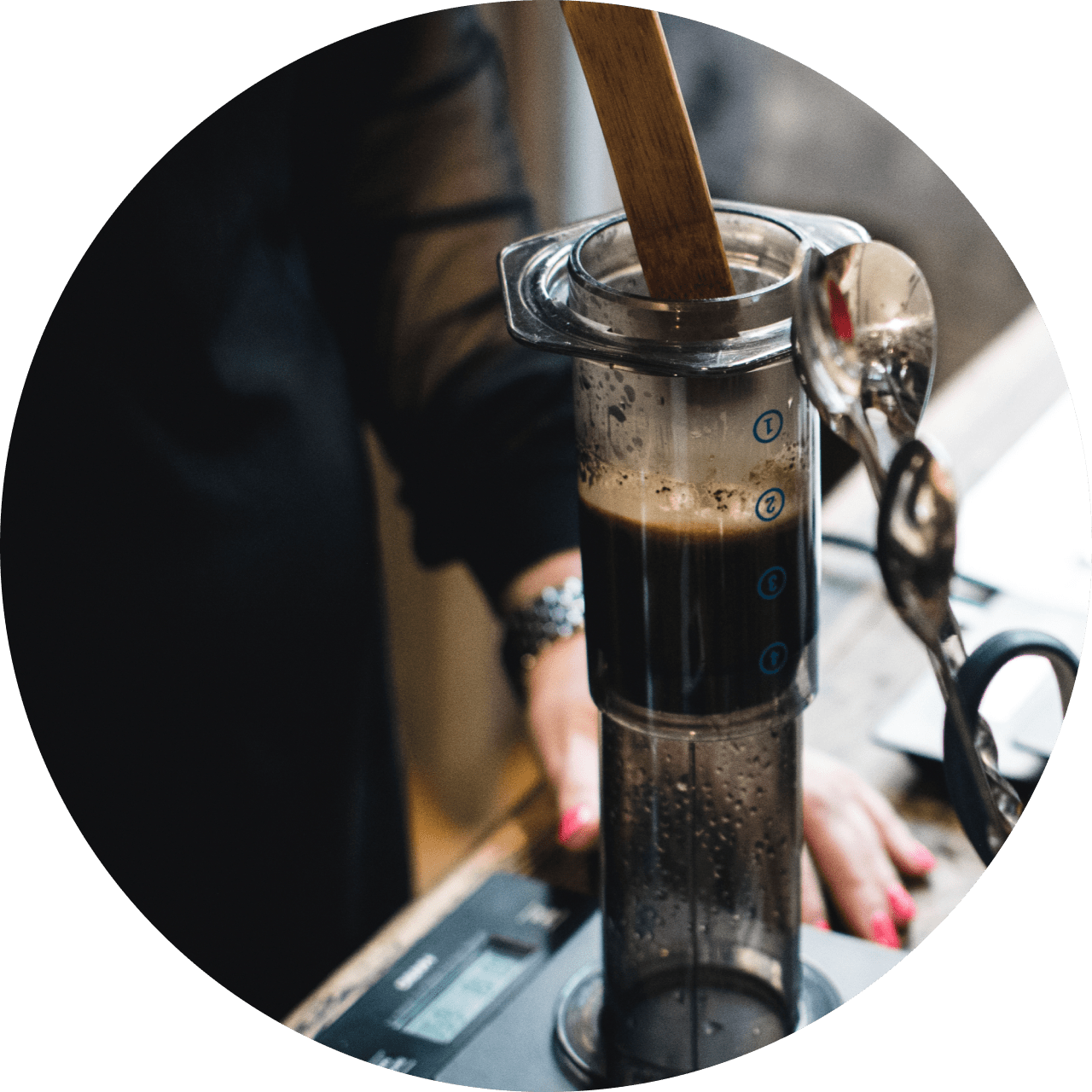

Plunge down slowly and enjoy your coffee

Wait for 1-1.5 minutes

Gently stir with a spoon to saturate the coffee and fasten the cap

Slowly pour in 220g of hot water (92°-94°C)

Put in 17g (≈2.5 tablespoons) of coffee (medium grind)

Assemble your Aeropress

Place the filter and rinse with hot water

ABOUT AEROPRESS
Like many other unique projects in the world, the aeropress was born as a slightly crazy idea in the head of one extraordinary person. Alan Adler, an inventor and mechanical engineer, had no intention of creating a commercial product. He was just looking for a way to improve the coffee making process.
At the time, Adler was brewing coffee with a pourover and suddenly realized that if you accelerate the brewing process using air pressure, something could come of it. In 2005 aeropress appeared on the market.
At the time, Adler was brewing coffee with a pourover and suddenly realized that if you accelerate the brewing process using air pressure, something could come of it. In 2005 aeropress appeared on the market.
The first international aeropress championship was held in 2008. Not only because it was founded by Adler and his company, but also because the coffee community was crazy about this little coffee device.
Aeropress made it possible for Alan to control more parameters than using an espresso machine. In fact, he created a device with more options than many other coffee devices.
You can literally do anything with an airpress!
Aeropress made it possible for Alan to control more parameters than using an espresso machine. In fact, he created a device with more options than many other coffee devices.
You can literally do anything with an airpress!


French press
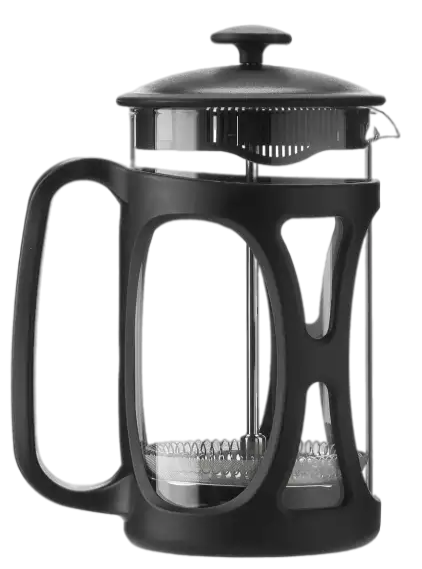


Cup profile: reach taste with discernible flavors and full body (might be a bit silty), usually brewed for 3–4 cups
Step-by-step instructions
HOW TO (4 min):


Press and enjoy!

Wait for 4 minutes

Put the cap on, so that it is a bit below the water surface

Carefully pour 400g (92°-94°C) of water to cover the coffee completely

Put 30g (4,5 tbs) of coffee (coarse grind) into the French press

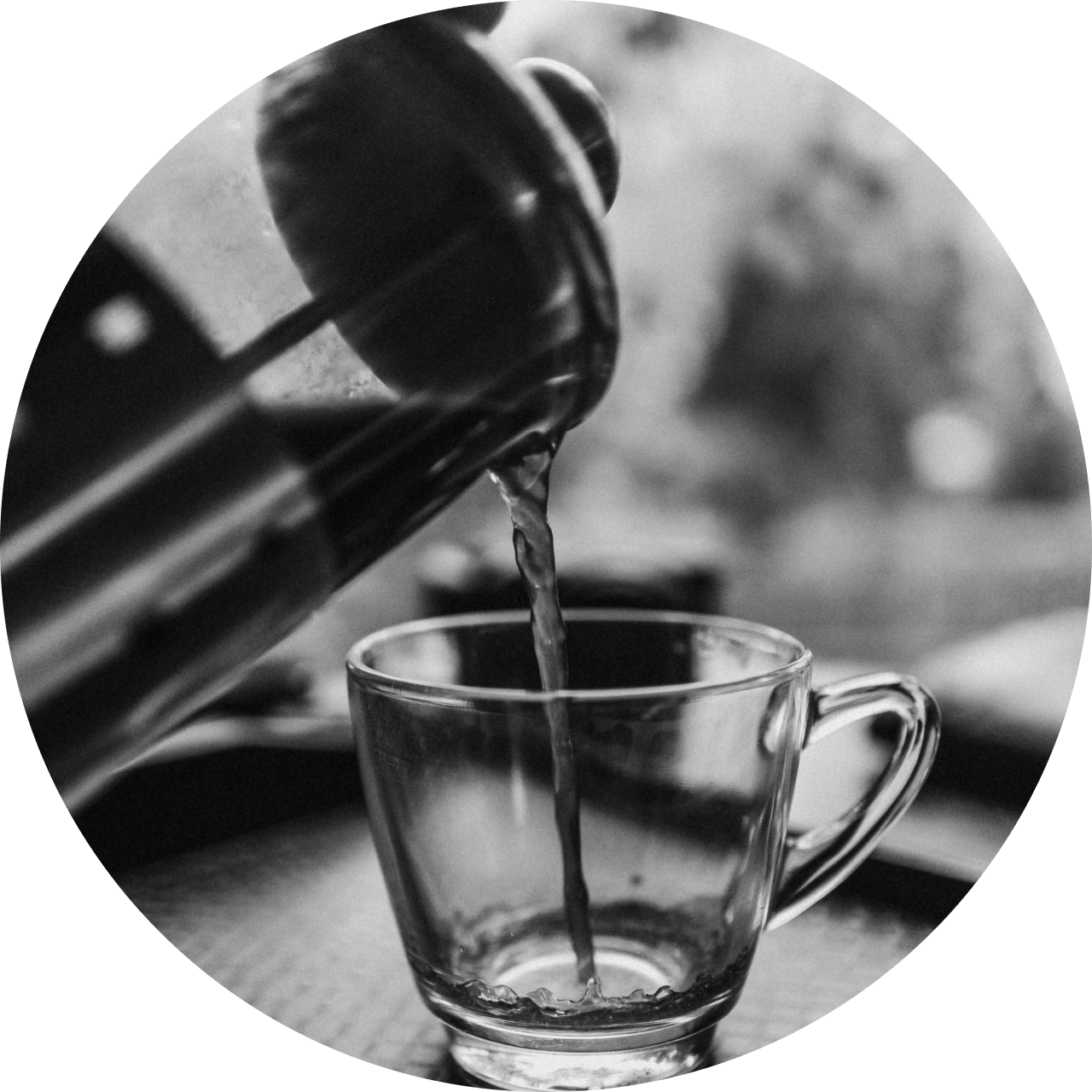
ABOUT French press
The first version of the French press was invented by the French. In 1852, Mayer and Delforge demonstrated a draft of their invention. It was a simple container with a flat sieve inside that lowered the coffee grounds to the bottom.
However, the first French press patent was registered in Italy in 1929 by the Italian designer Attilio Calimani.
However, the first French press patent was registered in Italy in 1929 by the Italian designer Attilio Calimani.
After World War II, it became widespread in Europe. Falerio Bondani, after making several modifications, patented his version in 1958 and began production in a French clarinet factory, calling it Martin SA and releasing it under the Melior brand. The popularity of the press was promoted by its use in the filming of the popular spy film Ipcress Dossier. The device was later popularized in Europe by the British company Household Articles Ltd. and the Danish cutlery and kitchenware company Bodum.


Chemex


Cup profile depends on the filter:
Chemex paper filter: extremely clean bean taste with no distractions and light body, usually brewed for 1–2 cups.
Usual paper filter: clean fresh taste with nuances of flavors and light body, usually brewed for 1–2 cups.
Chemex metal filter: quite rich taste with discernible flavors and middle body (might be a bit silty), usually brewed for 1–2 cups
Chemex paper filter: extremely clean bean taste with no distractions and light body, usually brewed for 1–2 cups.
Usual paper filter: clean fresh taste with nuances of flavors and light body, usually brewed for 1–2 cups.
Chemex metal filter: quite rich taste with discernible flavors and middle body (might be a bit silty), usually brewed for 1–2 cups
Step-by-step instructionS
HOW TO (3 min):


Slowly pour in 240g of the hot water in small portions to keep the water level at least 1 inch below the top

Add the remaining 200g and enjoy your coffee

Wait for 30 seconds

Gently pour 60g of hot water (92°-94°C) in circular motions to wet the coffee.

Put 30g (≈4,5 tbs) of coffee (medium coarse grind) in the filter (you can use more coffee if you want a more intense flavor)

Rinse the filter with hot water
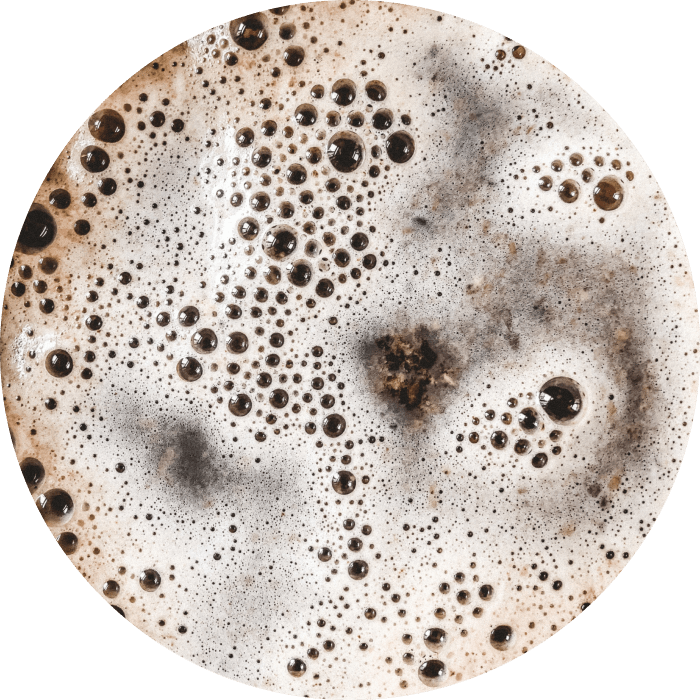
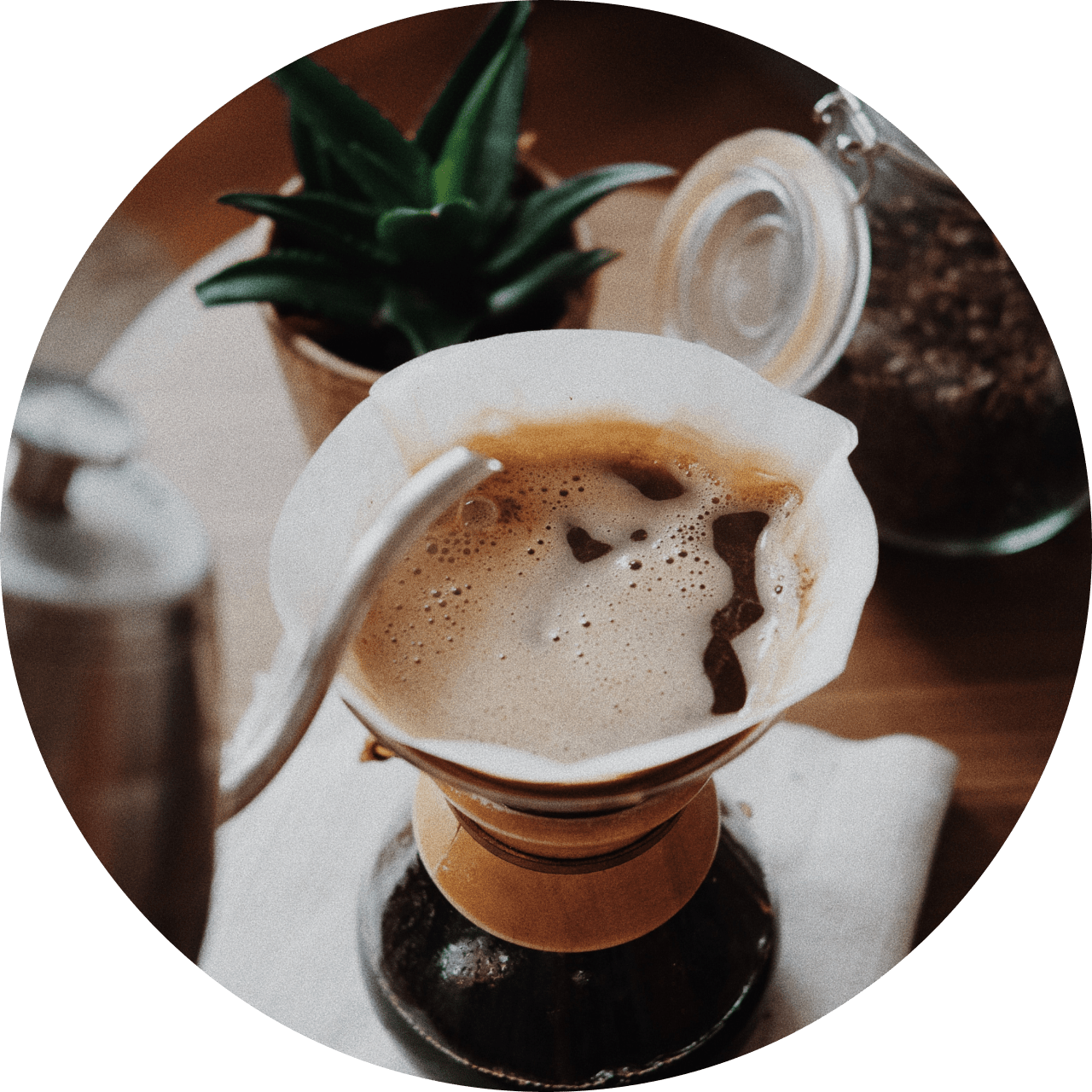
ABOUT Chemex
Chemex was invented in 1941 by the German chemist Peter Schlumbohm in America.
From the available tools: Erlenmeyer flasks, a laboratory glass funnel and a paper filter, Mr. Schlumbom built a semblance of a drip coffee maker. All the oils contained in the ground grains remained on the filter placed in the funnel, and a clear drink got into the flask.
From the available tools: Erlenmeyer flasks, a laboratory glass funnel and a paper filter, Mr. Schlumbom built a semblance of a drip coffee maker. All the oils contained in the ground grains remained on the filter placed in the funnel, and a clear drink got into the flask.
The coffee prepared in this way turned out to be tasty, but the design turned out to be inconvenient: the flask burned hands, and before pouring the drink, you had to look for a place where you could put the wet funnel removed from the flask. Schlumb found a way out: he connected the funnel with the flask with a leather grip. Later, the grip was made of wood, only the lace remained from the leather. To prevent coffee spilling past the cup, the chemist placed a funnel with a long spout at the top of the device. Through this gutter, air is expelled, displaced from the flask by hot water.
Coffee is often brewed in a hurry, when it is not up to the exact dosage of water. Therefore, the scientist placed a protrusion on the wall of the flask - the "navel", marking half of the volume.
Coffee is often brewed in a hurry, when it is not up to the exact dosage of water. Therefore, the scientist placed a protrusion on the wall of the flask - the "navel", marking half of the volume.
The first slogan of the Chemex advertising campaign was: "Brew coffee like a chemist." The advertising face of the campaign was the inventor himself, who demonstrated the work of his invention. He also installed a gilded Kemex on the front door of his Cadillac as a mascot.
The Chemex has been recognized as an outstanding piece of American design and has exhibited at the New York Museum of Modern Art since 1944.
The Chemex has been recognized as an outstanding piece of American design and has exhibited at the New York Museum of Modern Art since 1944.


moka pot
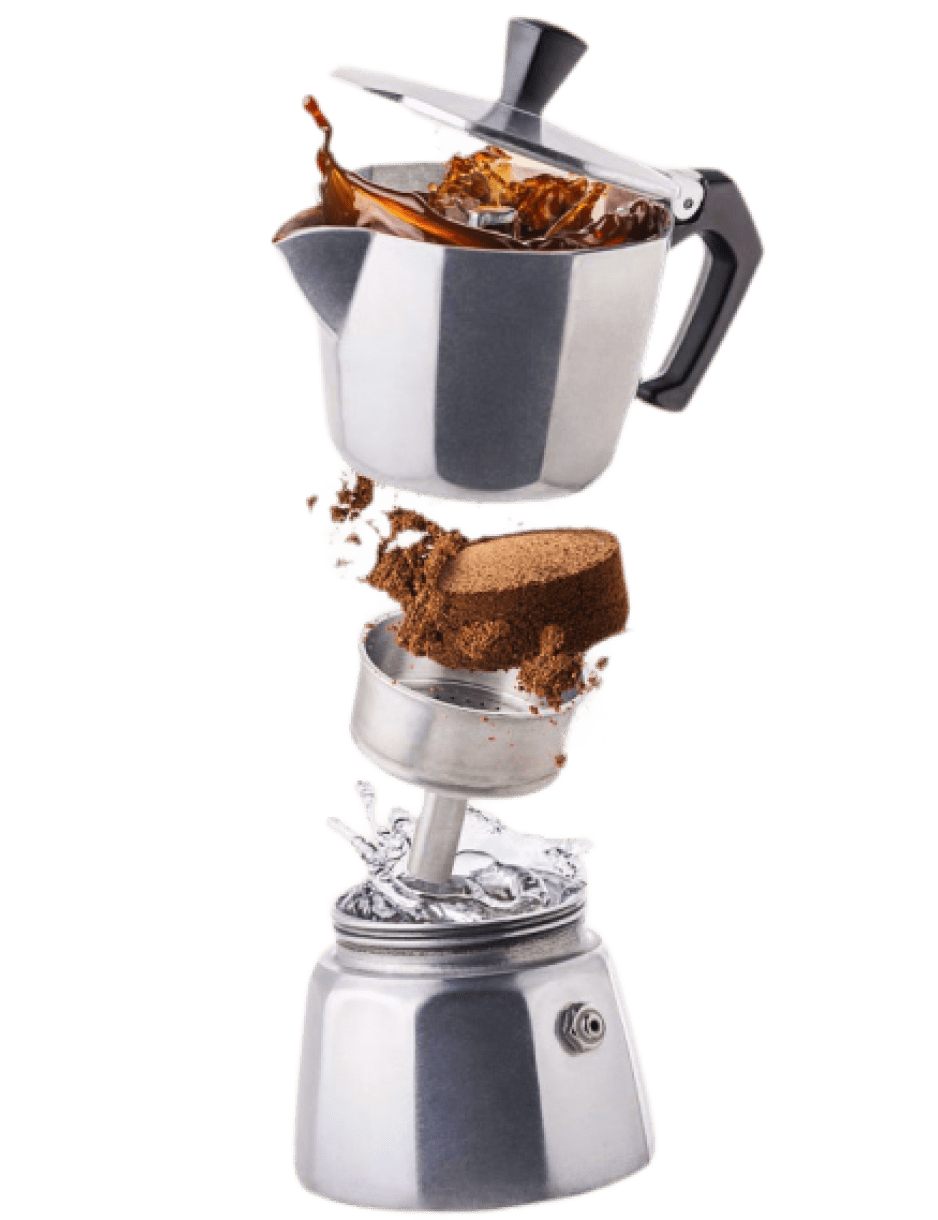

Cup profile: Full body and intense flavor, usually brewed for 1-2 cups
Step-by-step instructions
HOW TO (5 min):


As soon as you hear the hissing and gurgling sound, take the Moka pot off the heat and enjoy your coffee

Screw Moka pot’s top and bottom parts tightly and put on a medium heat

Put your coffee (fine grind) in the filter to fill it completely

Fill bottom part of Moka Pot with water, just keep it under the valve

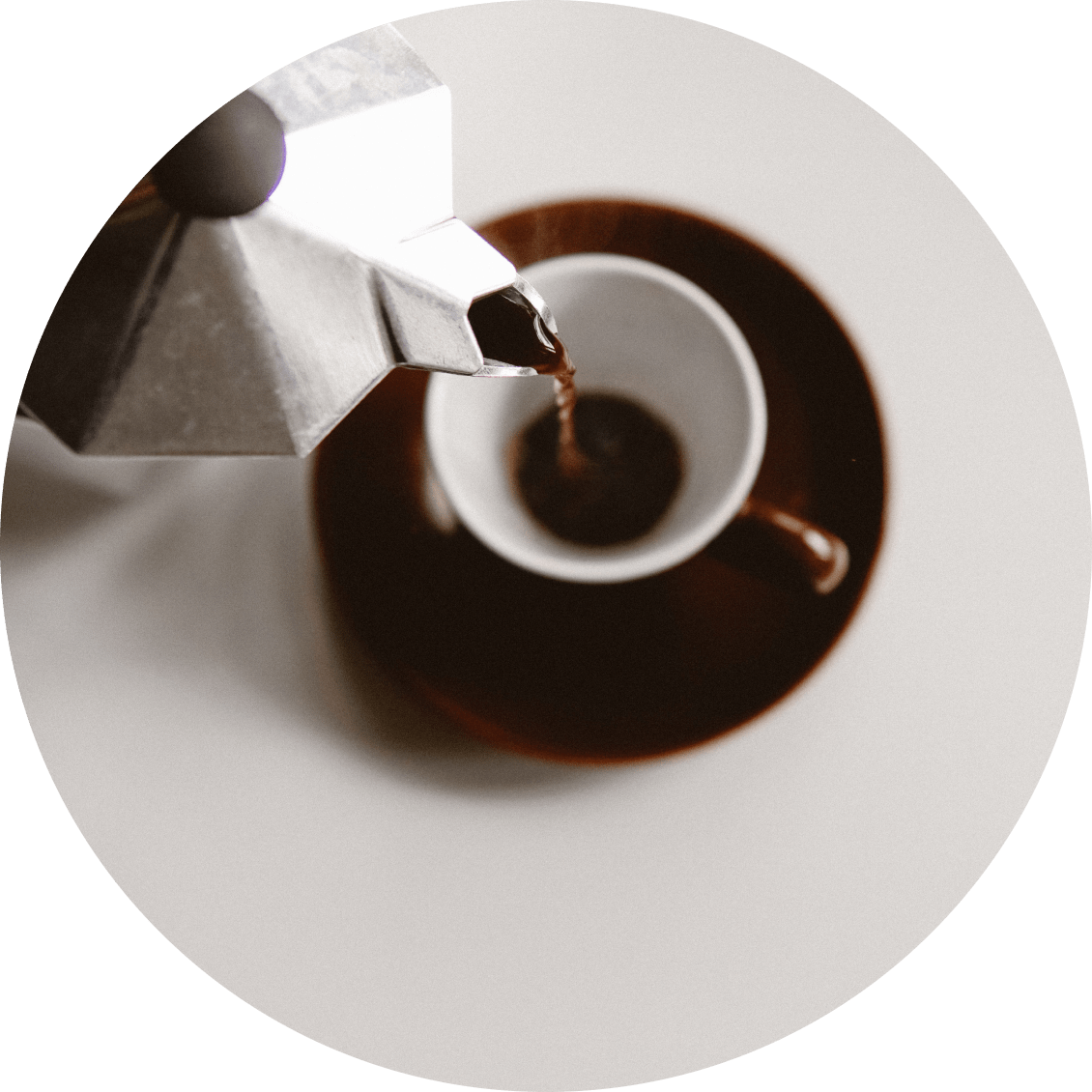
ABOUT moka pot
The principle of making coffee, used in the geyser coffee maker, was invented in 1833 by the Englishman Samuel Parker.
In 1933, the Italian industrialist Alfonso Bialetti (1888-1970) patented a geyser coffee maker called the Moka Express and set it up for mass production. It was made of aluminum and had a characteristic catchy angular design - all this has become a traditional feature of such coffee makers.
In 1933, the Italian industrialist Alfonso Bialetti (1888-1970) patented a geyser coffee maker called the Moka Express and set it up for mass production. It was made of aluminum and had a characteristic catchy angular design - all this has become a traditional feature of such coffee makers.
The first international aeropress championship was held in 2008. Not only because it was founded by Adler and his company, but also because the coffee community was crazy about this little coffee device.


HARIO v60
Step-by-step instructionS
Cup profile: clean fresh taste with nuances of flavors and light body, usually brewed for 1–2 cups
HOW TO (3 min):
Rinse filter with hot water and pour it away

Put 20g (3 tbs) of coffee (medium coarse grind)
inside Hario V60 filter
inside Hario V60 filter

Slowly pour in 60g of hot water (92°-93°C) every 30 seconds, until you reach 300g

Enjoy your coffee






ABOUT HARIO v60
Purover is a method of brewing filter coffee, in which hot water passes through the ground coffee in a special funnel with a paper filter. The second name of the method is Hario ("king of glass"), derived from the name of the Japanese company of the same name, which produces specialized utensils for brewing coffee.
In the 1980s, the market was dominated by immersion coffee makers, not by pourovers. Hario's designers wondered if the parabolic funnel shape, which allows water to pass through the coffee layer, would help to create a cleaner tasting cup. It was a great idea, but it took a few years to bring it to life in the V60.
In the 1980s, the market was dominated by immersion coffee makers, not by pourovers. Hario's designers wondered if the parabolic funnel shape, which allows water to pass through the coffee layer, would help to create a cleaner tasting cup. It was a great idea, but it took a few years to bring it to life in the V60.
As Hario says, the V60 is a natural shape dictated by nature. The funnel design is based on a parabola, the graph of the function y = x2. The name V60 comes from the letter V, which is angled at 60 degrees. The original V60 ceramic funnel is made from Japanese arita-yaki porcelain. The funnel was released in this design in 2004.
The popularity of V60-brewed coffee in specialty coffee shops is due to the funnel's frequent use in Brewers Cup competitions around the world. Five of the seven victories in recent championships have been won by competitors with the V60.
The popularity of V60-brewed coffee in specialty coffee shops is due to the funnel's frequent use in Brewers Cup competitions around the world. Five of the seven victories in recent championships have been won by competitors with the V60.

Customers also bought with this product


